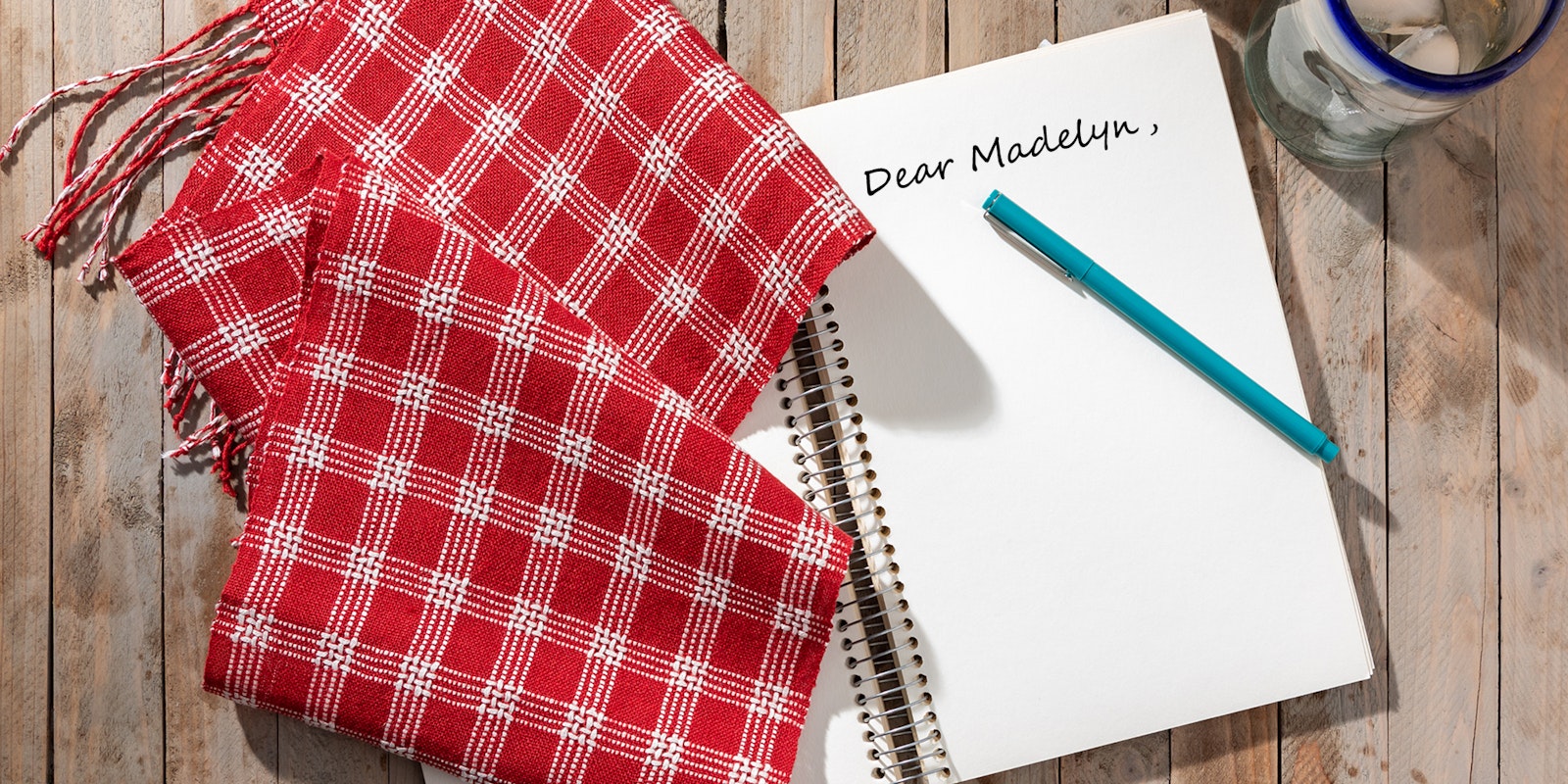Hi Madelyn!
I have a basic question that I bet other “not-very-experienced” weavers also have. I always seem to end up with loose ends in my projects where one weft thread stops and another starts. I usually overlap them and then cut the edges off and hope that they will ‘disappear’ when I wash the project after completion. That often does not work. I recently finished a baby blanket for my new granddaughter and there are those ends – my daughter-in-law is afraid to wash it again which is not good in a baby blanket (I already did twice before giving it to her). Do you have any good advice?
–Terrie Paine
Hi there, Terrie.
I am guessing that these are relatively thick yarns. There are several ways to handle changing to a new weft.
For fine wefts, I usually take the tail of the old weft into the new shed about 5/8 inch. I place the tail of the new weft on top of that so that it almost reaches the selvedge (or extends from it, and then I trim it off when I remove the fabric from the loom). You can overlap a fine weft anywhere in the shed, though the overlap has more of a tendency to show if it’s not along an edge.
You can overlap thick wefts, but splice them: trim plies from the new and old tails so that when they overlap by a several inches, the combined thickness is the same as the yarn itself along the overlap.
Some yarns are slippery or don’t have plies that are easy to splice. For these, I would leave the tails hanging out at the selvedges. Then, after you take the piece off the loom, thread each tail in a needle with a large eye and darn in the tail carefully. Sometimes it works to take the tail along a warp thread at the selvedge. If you work in the weft direction with a slippery yarn, try wrapping around a thread or two, the way you would end a sewing thread, doing the best you can to make this invisible.
––Madelyn

